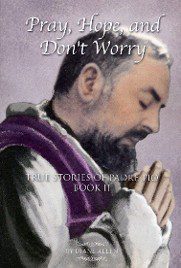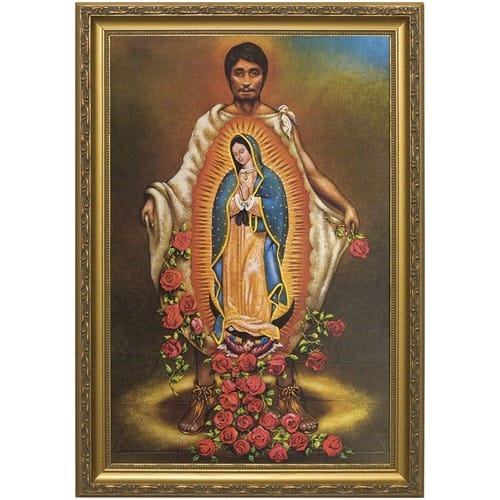Post by PopeADope on May 9, 2016 21:12:13 GMT
So when the Church “names” Saints, it is merely recognizing that the person is in heaven.
Second, there is not an opposite process. There is no process of naming those who are in hell. The Church truly believes in the unfathomable mercy of Jesus Christ and holds out hope that all who turn to Him in their final hour, or even in their final second, may achieve salvation. Therefore, the Church has never, and will never, declare somebody to be in hell.
The second step is that people must consider that the particular deceased person 1) possessed what is known as “heroic virtue,” 2) is now in heaven, and 3) should be recognized bt the Church for the sake of the faithful here on earth. These people can petition the bishop of the diocese in which the person lived to begin an investigation of the person and their life. The bishop, or his representatives, compile all the person’s writings along with as much testimony as they can gather on the person and writes a report.
After the bishop completes his investigation he sends his findings to the Congregation of the Causes of Saints. This group, located in Rome, begins further investigation and at the end of their investigation issues a statement that either attests to the “heroic virtue” of the person, or denies it. If the person under consideration was also killed, this is the stage at which it is determined if they were killed, in fact, for their faith or for a different reason. If the person passes this stage they may be known as “Venerable” and people may seek their intercession in prayer.
That their intercession may be sought represents a critical turning point. From this stage forward miracles are required. Those with a particular devotion to the person under consideration begin praying for the intercession of the would-be Saint.[undefined=undefined] In order to take the next step in the process a verifiable miracle must occur. This miracle must be investigated and proven to be impossible outside of divine explanation. These types of miracles are often medical, as in cured terminal diseases[/undefined], but not always.
Once a confirmed miracle has been attributed to this person’s intercession, a ceremony is held in which the person is proclaimed to be a “Blessed.” This is the final stage before being officially declared a Saint.
The final requirement is one more confirmed miracle. The requirements for this miracle are the same as the first miracle[/undefined] and once the miracle has been confirmed the person may be named a Saint, which usually happens in a ceremony involving Mass at the Vatican.
Often the process is shortened for a person who was martyred for their faith. In fact, it has become common practice to waive one of the miracles for martyrs.[/undefined] Once a person has been declared a saint, they are assigned a feast day and that feast day may be celebrated around the world.
coraevans.com/blog/article/the-canonization-process?gclid=CPCLvsq-6csCFZWFaQodWHwC-A
Padre Pio:
1887-1968

Padre Pio was a Follower of Saint Francis of Assissi, a lover of nature but also a poor beggar who humbled himself to the dust, cared for lepers, and loved lived in poverty. He referred to Her as "Lady Poverty."
Padre Pio largely followed that example with the exception that He wasn't homeless . but still, when the world was drawn to Him and put Him on a pedestal, He said "im just a poor Friar that prays."
""On September 20, 1918, while hearing confessions, Padre Pio had his first occurrence of the stigmata: bodily marks, pain, and bleeding in locations corresponding to the crucifixion wounds of Jesus Christ. This phenomenon continued for fifty years, until the end of his life. The blood flowing from the stigmata smelled of perfume or flowers, a phenomenon mentioned in stories of the lives of several saints and often referred to as the odour of sanctity. Though Padre Pio would have preferred to suffer in secret, by early 1919, news about the stigmatic friar began to spread in the secular world. Padre Pio’s wounds were examined by many people, including physicians.[4]
People who had started rebuilding their lives after World War I, began to see in Padre Pio a symbol of hope.[13] Those close to him attest that he began to manifest several spiritual gifts, including the gifts of healing, bilocation, levitation, prophecy, miracles, extraordinary abstinence from both sleep and nourishment (one account states that Padre Agostino recorded one instance in which Padre Pio was able to subsist for at least 20 days at Verafeno on only the Eucharist without any other nourishment), the ability to read hearts, the gift of tongues, the gift of conversions, and the fragrance from his wounds.[14]
His stigmata, regarded as evidence of holiness, were studied by physicians whose independence from the Church is not known.[15] The observations were unexplainable and the wounds never became infected.[16][17] His wounds healed once but reappeared.[18] They were examined by Luigi Romanelli, chief physician of the City Hospital of Barletta, for about one year. Dr. Giorgio Festa, a private practitioner, also examined them in 1920 and 1925. Professor Giuseppe Bastianelli, physician to Pope Benedict XV, agreed that the wounds existed but made no other comment. Pathologist Dr. Amico Bignami of the University of Rome also observed the wounds but could make no diagnosis.[19] Both Bignami and Dr. Giuseppe Sala commented on the unusually smooth edges of the wounds and lack of edema. Dr. Alberto Caserta took x-rays of Padre Pio's hands in 1954 and found no abnormality in the bone structure.[20]
Padre Pio was said to have had the gift of reading souls, the ability to bilocate (according to eyewitness accounts), among other supernatural phenomena. He was said to communicate with angels and worked favors and healings before they were requested of him.[45] The reports of supernatural phenomena surrounding Padre Pio attracted fame and legend. The Vatican was initially skeptical.
In the 1999 book, Padre Pio: The Wonder Worker, a segment by Irish priest Malachy Gerard Carroll describes the story of Gemma de Giorgi, a Sicilian girl whose blindness was believed to have been cured during a visit to Padre Pio.[46] Gemma, who was brought to San Giovanni Rotondo in 1947 by her grandmother, was born without pupils. During her trip to see Padre Pio, the little girl began to see objects, including a steamboat and the sea.[46][47] Gemma's grandmother did not believe the child had been healed. After Gemma forgot to ask Padre Pio for grace during her confession, her grandmother implored the priest to ask God to restore her sight.[46] Padre Pio told her, "The child must not weep and neither must you for the child sees and you know she sees."[46] Oculists were unable to determine how she gained vision.
Padre Pio believed the love of God is inseparable from suffering, and that suffering all things for the sake of God is the way for the soul to reach God. He felt that his soul was lost in a chaotic maze, plunged into total desolation, as if he were in the deepest pit of hell.
Fr. Gabriele Amorth, senior exorcist of Vatican City, stated in an interview that Padre Pio was able to distinguish between real apparitions of Jesus, Mary and the saints and the illusions created by the devil, by carefully analysing the state of his mind and the feelings produced in him during the apparitions.
In one of Padre Pio's letters, he states that he remained patient in the midst of his trials because of his firm belief that Jesus, Mary, his guardian angel, St. Joseph, and St. Francis were always with him and helped him [48] During his period of spiritual suffering, his followers believe that Padre Pio was attacked by the devil, both physically and spiritually.[14] His followers also believe that the devil used diabolical tricks in order to increase Padre Pio's torments. These included apparitions as an "angel of light" and the alteration or destruction of letters to and from his spiritual directors. Padre Augustine confirmed this when he said:
Now, twenty-two days have passed since Jesus allowed the devils to vent their anger on me. My Father, my whole body is bruised from the beatings that I have received to the present time by our enemies. Several times, they have even torn off my shirt so that they could strike my exposed flesh.[48]
Padre Pio reported engaging in physical combat with Satan and his minions, similar to incidents described concerning St. John Vianney, from which he was said to have sustained extensive bruising. On the day of Padre Pio's death, mystic and Servant of God Maria Esperanza de Bianchini from Venezuela reported that he appeared to her in a vision and said, "I have come to say good-bye. My time has come. It is your turn."[49][50][51] Her husband saw his wife's face transfigured into that of Padre Pio.[50] On the following day, they learned that Padre Pio had died.[49][51] Witnesses say they later saw Esperanza levitating during Mass and engaging in bilocation.[51] Padre Domenico da Cese, a fellow Capuchin stigmatist, reported that on Sunday, September 22, 1968, he saw Padre Pio kneeling in prayer before the Holy Face of Manoppello, although it was known that Padre Pio had not left his room.[52]
en.wikipedia.org/wiki/Pio_of_Pietrelcina
There were Anti Catholic freemasons as well who tested His ability to read hearts by confessing to Him and He could tell them the sins that they were guilty of that they had not confessed.
Second, there is not an opposite process. There is no process of naming those who are in hell. The Church truly believes in the unfathomable mercy of Jesus Christ and holds out hope that all who turn to Him in their final hour, or even in their final second, may achieve salvation. Therefore, the Church has never, and will never, declare somebody to be in hell.
The second step is that people must consider that the particular deceased person 1) possessed what is known as “heroic virtue,” 2) is now in heaven, and 3) should be recognized bt the Church for the sake of the faithful here on earth. These people can petition the bishop of the diocese in which the person lived to begin an investigation of the person and their life. The bishop, or his representatives, compile all the person’s writings along with as much testimony as they can gather on the person and writes a report.
After the bishop completes his investigation he sends his findings to the Congregation of the Causes of Saints. This group, located in Rome, begins further investigation and at the end of their investigation issues a statement that either attests to the “heroic virtue” of the person, or denies it. If the person under consideration was also killed, this is the stage at which it is determined if they were killed, in fact, for their faith or for a different reason. If the person passes this stage they may be known as “Venerable” and people may seek their intercession in prayer.
That their intercession may be sought represents a critical turning point. From this stage forward miracles are required. Those with a particular devotion to the person under consideration begin praying for the intercession of the would-be Saint.[undefined=undefined] In order to take the next step in the process a verifiable miracle must occur. This miracle must be investigated and proven to be impossible outside of divine explanation. These types of miracles are often medical, as in cured terminal diseases[/undefined], but not always.
Once a confirmed miracle has been attributed to this person’s intercession, a ceremony is held in which the person is proclaimed to be a “Blessed.” This is the final stage before being officially declared a Saint.
The final requirement is one more confirmed miracle. The requirements for this miracle are the same as the first miracle[/undefined] and once the miracle has been confirmed the person may be named a Saint, which usually happens in a ceremony involving Mass at the Vatican.
Often the process is shortened for a person who was martyred for their faith. In fact, it has become common practice to waive one of the miracles for martyrs.[/undefined] Once a person has been declared a saint, they are assigned a feast day and that feast day may be celebrated around the world.
coraevans.com/blog/article/the-canonization-process?gclid=CPCLvsq-6csCFZWFaQodWHwC-A
Padre Pio:
1887-1968

Padre Pio was a Follower of Saint Francis of Assissi, a lover of nature but also a poor beggar who humbled himself to the dust, cared for lepers, and loved lived in poverty. He referred to Her as "Lady Poverty."
Padre Pio largely followed that example with the exception that He wasn't homeless . but still, when the world was drawn to Him and put Him on a pedestal, He said "im just a poor Friar that prays."
""On September 20, 1918, while hearing confessions, Padre Pio had his first occurrence of the stigmata: bodily marks, pain, and bleeding in locations corresponding to the crucifixion wounds of Jesus Christ. This phenomenon continued for fifty years, until the end of his life. The blood flowing from the stigmata smelled of perfume or flowers, a phenomenon mentioned in stories of the lives of several saints and often referred to as the odour of sanctity. Though Padre Pio would have preferred to suffer in secret, by early 1919, news about the stigmatic friar began to spread in the secular world. Padre Pio’s wounds were examined by many people, including physicians.[4]
People who had started rebuilding their lives after World War I, began to see in Padre Pio a symbol of hope.[13] Those close to him attest that he began to manifest several spiritual gifts, including the gifts of healing, bilocation, levitation, prophecy, miracles, extraordinary abstinence from both sleep and nourishment (one account states that Padre Agostino recorded one instance in which Padre Pio was able to subsist for at least 20 days at Verafeno on only the Eucharist without any other nourishment), the ability to read hearts, the gift of tongues, the gift of conversions, and the fragrance from his wounds.[14]
His stigmata, regarded as evidence of holiness, were studied by physicians whose independence from the Church is not known.[15] The observations were unexplainable and the wounds never became infected.[16][17] His wounds healed once but reappeared.[18] They were examined by Luigi Romanelli, chief physician of the City Hospital of Barletta, for about one year. Dr. Giorgio Festa, a private practitioner, also examined them in 1920 and 1925. Professor Giuseppe Bastianelli, physician to Pope Benedict XV, agreed that the wounds existed but made no other comment. Pathologist Dr. Amico Bignami of the University of Rome also observed the wounds but could make no diagnosis.[19] Both Bignami and Dr. Giuseppe Sala commented on the unusually smooth edges of the wounds and lack of edema. Dr. Alberto Caserta took x-rays of Padre Pio's hands in 1954 and found no abnormality in the bone structure.[20]
Padre Pio was said to have had the gift of reading souls, the ability to bilocate (according to eyewitness accounts), among other supernatural phenomena. He was said to communicate with angels and worked favors and healings before they were requested of him.[45] The reports of supernatural phenomena surrounding Padre Pio attracted fame and legend. The Vatican was initially skeptical.
In the 1999 book, Padre Pio: The Wonder Worker, a segment by Irish priest Malachy Gerard Carroll describes the story of Gemma de Giorgi, a Sicilian girl whose blindness was believed to have been cured during a visit to Padre Pio.[46] Gemma, who was brought to San Giovanni Rotondo in 1947 by her grandmother, was born without pupils. During her trip to see Padre Pio, the little girl began to see objects, including a steamboat and the sea.[46][47] Gemma's grandmother did not believe the child had been healed. After Gemma forgot to ask Padre Pio for grace during her confession, her grandmother implored the priest to ask God to restore her sight.[46] Padre Pio told her, "The child must not weep and neither must you for the child sees and you know she sees."[46] Oculists were unable to determine how she gained vision.
Padre Pio believed the love of God is inseparable from suffering, and that suffering all things for the sake of God is the way for the soul to reach God. He felt that his soul was lost in a chaotic maze, plunged into total desolation, as if he were in the deepest pit of hell.
Fr. Gabriele Amorth, senior exorcist of Vatican City, stated in an interview that Padre Pio was able to distinguish between real apparitions of Jesus, Mary and the saints and the illusions created by the devil, by carefully analysing the state of his mind and the feelings produced in him during the apparitions.
In one of Padre Pio's letters, he states that he remained patient in the midst of his trials because of his firm belief that Jesus, Mary, his guardian angel, St. Joseph, and St. Francis were always with him and helped him [48] During his period of spiritual suffering, his followers believe that Padre Pio was attacked by the devil, both physically and spiritually.[14] His followers also believe that the devil used diabolical tricks in order to increase Padre Pio's torments. These included apparitions as an "angel of light" and the alteration or destruction of letters to and from his spiritual directors. Padre Augustine confirmed this when he said:
Now, twenty-two days have passed since Jesus allowed the devils to vent their anger on me. My Father, my whole body is bruised from the beatings that I have received to the present time by our enemies. Several times, they have even torn off my shirt so that they could strike my exposed flesh.[48]
Padre Pio reported engaging in physical combat with Satan and his minions, similar to incidents described concerning St. John Vianney, from which he was said to have sustained extensive bruising. On the day of Padre Pio's death, mystic and Servant of God Maria Esperanza de Bianchini from Venezuela reported that he appeared to her in a vision and said, "I have come to say good-bye. My time has come. It is your turn."[49][50][51] Her husband saw his wife's face transfigured into that of Padre Pio.[50] On the following day, they learned that Padre Pio had died.[49][51] Witnesses say they later saw Esperanza levitating during Mass and engaging in bilocation.[51] Padre Domenico da Cese, a fellow Capuchin stigmatist, reported that on Sunday, September 22, 1968, he saw Padre Pio kneeling in prayer before the Holy Face of Manoppello, although it was known that Padre Pio had not left his room.[52]
en.wikipedia.org/wiki/Pio_of_Pietrelcina
There were Anti Catholic freemasons as well who tested His ability to read hearts by confessing to Him and He could tell them the sins that they were guilty of that they had not confessed.






